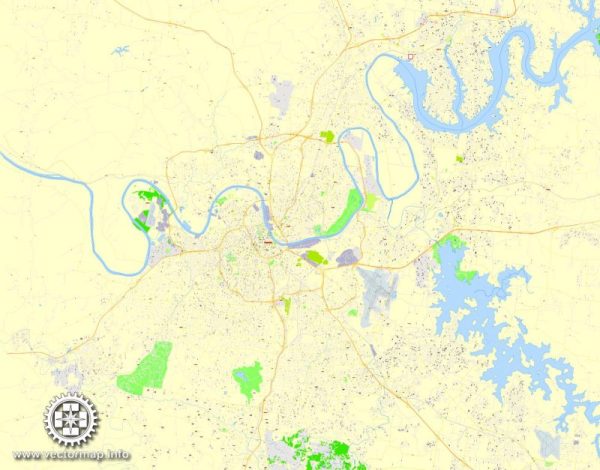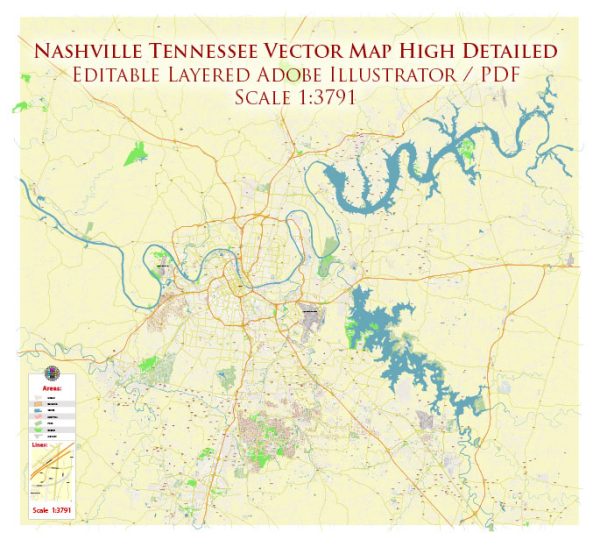Nashville, Tennessee, has a rich history of urban development that reflects the broader trends in American urbanization. Here’s an overview of key historical milestones in the urban development of Nashville:
- Early Settlement (1700s): The area that is now Nashville was originally inhabited by Native American tribes, including the Cherokee and Chickasaw. European settlers, primarily Scots-Irish and English, began to establish homesteads in the late 1700s.
- Founding of Nashville (1779): The city was founded in 1779 by James Robertson and John Donelson, who named it after Francis Nash, a Continental Army general. Nashville quickly became a center for trade and commerce due to its strategic location on the Cumberland River.
- Antebellum Period (1800-1860): Nashville continued to grow during the Antebellum period, with the development of a vibrant economy based on agriculture, commerce, and the river trade. The city also became a center for education and culture, earning the nickname the “Athens of the South.”
- Civil War (1861-1865): During the Civil War, Nashville became a crucial strategic point for both the Union and the Confederacy. The city fell to Union forces in 1862, leading to its occupation for the remainder of the war. The war had a significant impact on the city’s infrastructure and economy.
- Post-Civil War Reconstruction (1865-1877): After the Civil War, Nashville, like many Southern cities, underwent a period of reconstruction. The city’s economy diversified, and the population continued to grow. The construction of railroads further facilitated trade and transportation.
- Growth and Industrialization (Late 19th to Early 20th Century): Nashville experienced significant growth in the late 19th and early 20th centuries. The city’s industrial base expanded, and infrastructure, including roads and utilities, improved. The introduction of electric streetcars in the late 1800s enhanced transportation within the city.
- Great Depression and New Deal Era (1930s): The Great Depression had a profound impact on Nashville, as it did on the rest of the country. The New Deal programs of the 1930s, aimed at stimulating economic recovery, resulted in the construction of several public buildings and infrastructure projects in the city.
- Civil Rights Era (1950s-1960s): Nashville played a significant role in the Civil Rights Movement. The city was a focal point for sit-ins, protests, and the work of influential civil rights leaders, including James Lawson and John Lewis.
- Urban Renewal and Interstate Construction (Mid-20th Century): Like many American cities, Nashville experienced urban renewal projects in the mid-20th century. The construction of interstates, such as I-40 and I-65, reshaped the city’s landscape but also had both positive and negative impacts on different neighborhoods.
- Contemporary Development (Late 20th Century-Present): Nashville has continued to grow and evolve in recent decades. The city has become known for its thriving music industry, healthcare sector, and as a popular tourist destination. The revitalization of neighborhoods like The Gulch and the ongoing development of the downtown area demonstrate Nashville’s commitment to urban renewal and growth.
In summary, Nashville’s history of urban development reflects a combination of economic, social, and political forces that have shaped the city into the vibrant and diverse metropolis it is today. The city’s resilience through periods of war, economic challenges, and social change has contributed to its unique character and identity.



 Author: Kirill Shrayber, Ph.D.
Author: Kirill Shrayber, Ph.D.